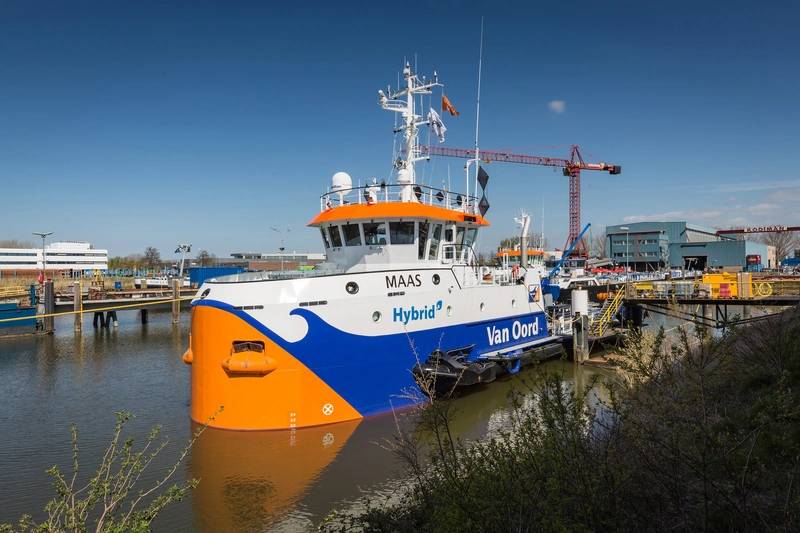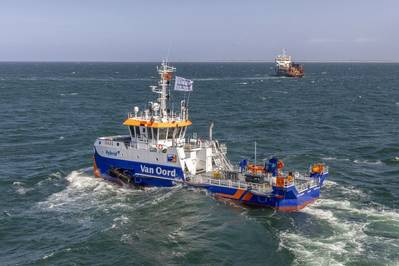Kooiman Delivers Hybrid Water Injection Dredger Pair to Van Oord
A pair of custom designed and built Water Injection Dredgers (WID) dubbed Maas and Mersey were built at Kooiman Marine Group and christened earlier this week at the office of Van Oord in Rotterdam.
The hybrid vessels were developed by Kooiman Engineering in cooperation with Van Oord. Two electrically driven pumps deliver water under high pressure, or with a lot of volume through the U-shaped water injection pipe located at the rear of the ship. With this pipe, water is injected into the soil, releasing sediment which is flushed away by the current. Multiple injection methods are possible, giving the ship optimal usability.
The ships measure 43.07 x 12.4 meters with a 3.4 meter depth.
"The first sea trial with the Maas was performed some time ago." said Maarten Kooiman, project manager of the shipyard. "The sea trials were intensive. The ship is equipped with many systems that reduce emissions and increase employability. We tested these extensively."
To keep in check with fast-emerging environmental regulations, the ship has a battery-hybrid energy management. "With the flexibility of 1 or 2 diesel generators, which meet the IMO Tier 3 and Stage V emission requirements, the on-board network is powered. In addition, heat from the exhaust gases is converted into electrical power which is fed back into the grid," said Kooiman.
"In addition to the development of a sustainable ship, we also have chosen to optimize the dredging process" said Rick Jansen, project manager New Building at Van Oord. "The ship is equipped with Dynamic Positioning. The ship is very maneuverable because of the two electrically driven rudder propellers and the electrically driven bow thruster" continues Rick. "With the very low draught, these vessels are in particular suitable for maintenance dredging in shallow ports."
"We looked at the shape of the underwater vessel in detail. Within the length, width and draught restrictions, the design is hydrodynamically optimized and the resistance minimized," said Kooiman. "This allows less power to be installed, which directly results in a reduction in fuel consumption during sailing and even less CO2 emissions. In addition, the noise level of the ship is extremely low, resulting in maximum comfort for the crew."
 Photo courtesy Kooiman Marine Group
Photo courtesy Kooiman Marine Group











